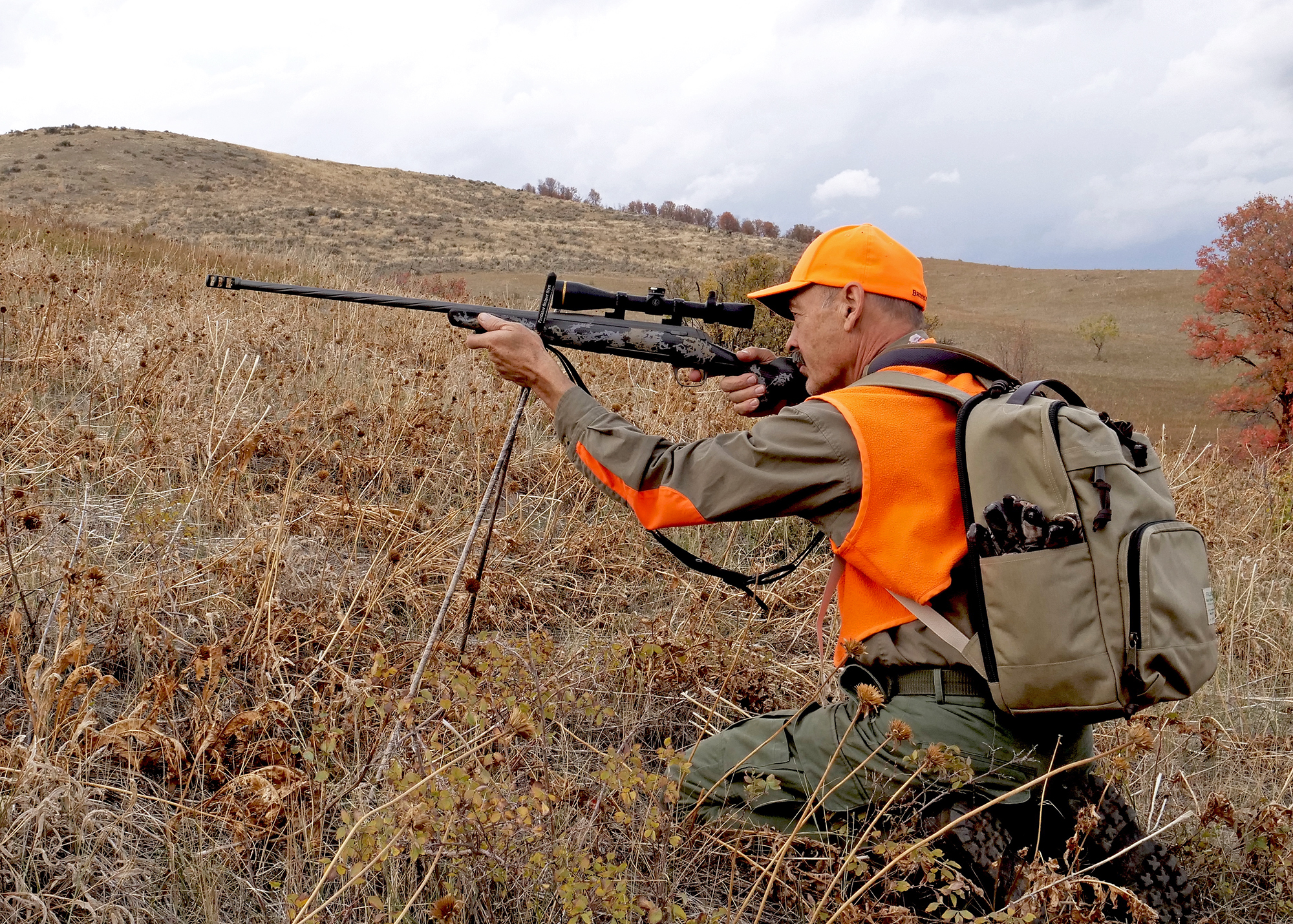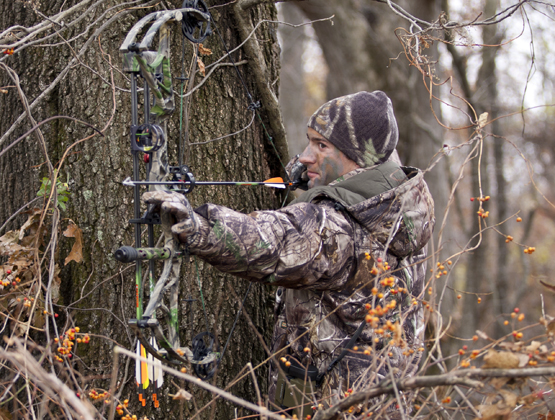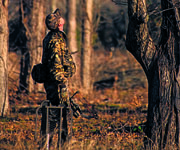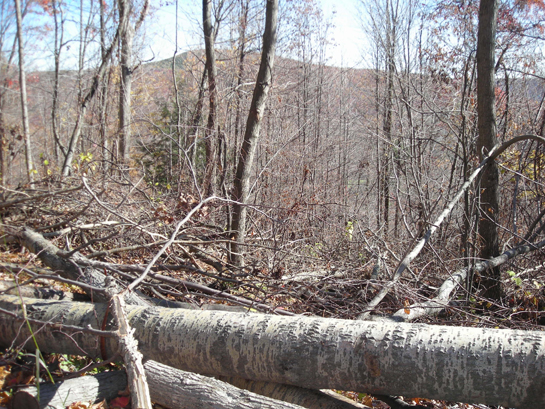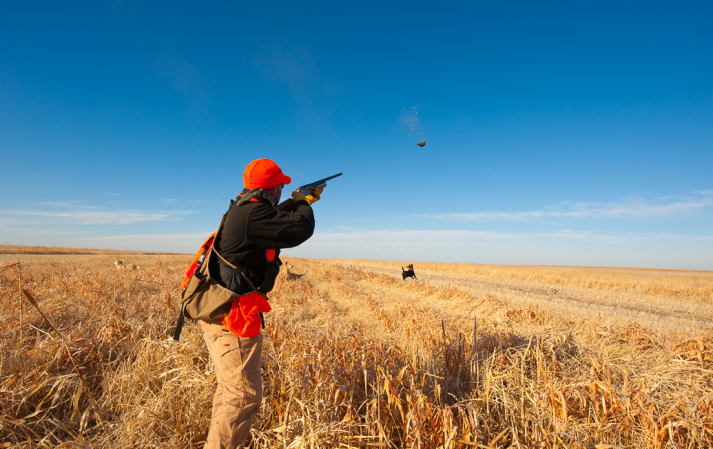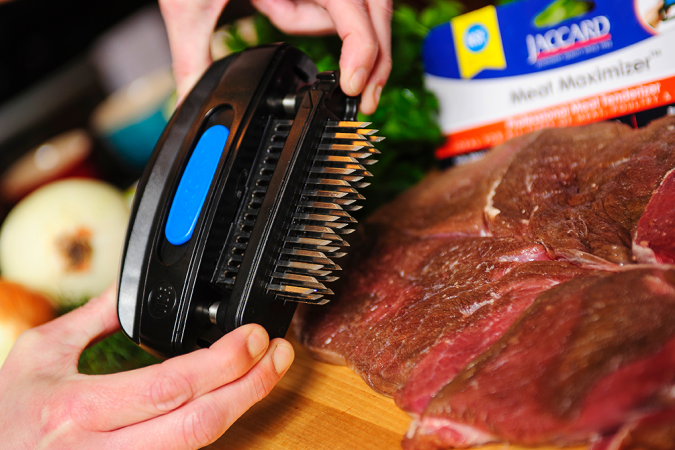We may earn revenue from the products available on this page and participate in affiliate programs. Learn More ›
I’ll admit it—I’m a fudd. A riflescope fudd. I hunt with my scopes set for the old-school Maximum Point-Blank Range system. Young hunters might be experts at manipulating, reading, and applying laser rangefinders, anemometers, smartphone ballistic computers, scope dialing turrets and ballistic drop compensating reticles, but I am not.
So, call me Elmer for sticking with my old Maximum Point Blank Range (MPBR) system. I don’t mind because this fuddy duddy zeroing system has delivered plenty of big-game animals over the years, including seven wild sheep as far as 480 yards. No batteries required.
If you do want to reject my antiquated method, however, I’ll admit that turret dialing and ballistic reticles work beautifully. They just require a bit more time and calculating.
The benefits of MPBR are versatility, simplicity, and speed. You don’t need support tools other than sound judgement. Just make a rough estimate that game is within your MPBR before aiming center chest and shooting. Drawbacks include limited range (if you call 300 to 400 yards limiting) and the need to hold the reticle over the target for longer shots.
Ballistic reticles let you place your reticle directly where you want to hit without taking your eye off the sight picture. Challenges include time to make a laser range reading, visually selecting the correct reticle, and not getting lost amid any number of reticle lines.
Turret dialing helps you put your shots spot on while maintaining a familiar, comforting center hold with a simple, clean reticle. Challenges include time to operate the rangefinder plus, usually, taking your eye out of the scope to adjust the turret to its proper setting.
Let’s dive a bit deeper into each system so you can decide which one will work best for your western big-game hunt.
Maximum Point-Blank Range
MPBR takes advantage of the “flat” trajectory of your bullets. The faster they launch and the more efficiently they resist drag, the flatter they shoot and the longer your potential MPBR. MPBR might be 195 yards for a .30-30, or 296 yards for a .270 Winchester. The 6.8 Western I’m hunting with spits a 165-grain bullet about 2,970 fps out of my Browning X-Bolt Mountain Pro, as recorded on my chronograph. It has an MPBR of about 320 yards.
To set up for MPBR on a 6-inch diameter target zone, you zero at whatever distance results in your trajectory peaking 3-inches high. This is usually around 150 to 180 yards. Once you’ve clarified this, you shoot at more distant targets to determine at what distance your bullets drop 3-inches below your point-of aim. In short, your bullet’s trajectory “fits” within that 6-inch circle from the muzzle to your MPBR, so dead-center holds should put you in pay dirt.
Why a 6-inch target? Most game carries a vital zone (chest, broadside) of at least 10 inches of lungs/heart/spine, so why not set MPBR for the larger target zone? Insurance. Use the smaller 6-inch target to offset poor shooting and any inaccuracy in your rifle. If you pull a shot an inch or two off-center, you’re still in the vital zone. Obviously rifle accuracy matters, too. An MOA rifle means any shot could land one-half MOA off point of aim. At 400 yards this could be 2 inches. Add that to your 6-inch zone and you’re realistically looking at hitting an 8-inch vital zone, still safe out to about 400 yards with another two inches or so to accommodate poor shooting.
MPBR lets you take quick shots at any game you judge to be within your MPRB. But if you have time to make a laser measurement and discover your game is beyond MPBR, you have the option for “hold over aiming.” This is essentially like using a ballistic reticle without the confusing series of sub-reticles. So, if you know your deer’s chest spans about 18-inches brisket-to-withers and you know your bullet drops 13 inches at 400 yards, you just elevate until your reticle is just above the buck’s backline (leaving just an inch of daylight). If your bullet drops 13 inches from that point of aim, it should land 6 inches above the brisket, i.e. in or over the heart. If drop is 24 inches at whatever range (about 470 yards in this case), hold “a deer over” (18 inches high) and you should hit six inches below the buck’s back, i.e. a lung shot.
Practitioners of MPBR can wield this technique with remarkable efficiency, making vital zone hits reliably from as far as 500 yards. But if you really intend to shoot at 400 to 500 yards regularly, you’ll likely prefer a bit more precision. That means you’ll want to check out ballistic reticles.
Ballistic Reticles
I include here any reticle that provides multiple aiming points corresponding to different ranges. These could be MOA, Mil-Radian, or numbered yardage distances. You might zero so the center reticle is dead on for 100 yards, the first one below that 200 yards, then 300 yards, 350 yards, etc. These provide precise “hold on target” aiming points that boost confidence. Some ballistic reticles include enough hash marks to provide precise aiming points at 25-yard distances out to 600 yards. Some include horizontal markers for wind corrections, too.
Using these BRs requires laser distance readings and often a solid wind speed and direction reading, too, if using windage marks. This takes time, but for long shots, that’s necessary. Once you know the distance, you can keep your eye in the scope until your game presents the perfect shot, but if it moves significantly closer or farther, you’ll need to take another range reading and select another aiming reticle.
Shooters skilled at using ballistic reticles can deliver bullets on target quickly to 600, sometimes 800 yards, but reticles for distances beyond that get pretty cluttered because bullets begin dropping radically at those ranges. You could see 10 inches more drop between 700 and 725 yards. The more sub-reticles a scope includes, the easier it is to select the wrong one, too. You can order custom reticles to match your bullet’s trajectory curve, but then you’ll have to stick with the same load. If you move up or down more than about 5,000 feet in elevation your trajectory curve might change enough to make the long range reticles imprecise.
If reticle clutter isn’t your idea of fun, check out turret dialing.
Turret Dialing
Turret dialing involves adjusting a scope’s elevation or windage turrets to position the center reticle aiming point to match where the bullet should land. Obviously, you must know the distance to target, your trajectory curve, and any windage information if you dial for wind. Many turret dialers prefer windage marks on the horizontal reticle for quick holds without dialing. This is the much faster, safer method because you don’t worry about forgetting to reset your windage turret.
Resetting the elevation turret must become habit, too, lest you end up shooting over a 200-yard target because you left your turret dialed for a 600-yard shot. One downside to dialing is that you must usually take your eye off the target to see and dial the turret. In the meantime, your game could move enough that you lose track of it.
Turrets can be marked in MOA, Mils, or (with a custom turret) specific distances. Unless you memorize MOAs or Mils until they’re second nature, distance marks on a turret tailored to your bullet’s trajectory curve are faster to use. If your rangefinder indicates a buck at 468 yards, you turn your turret to the 475-yard mark and you’re more than close enough for a center zone hold. Between 800 and 825 yards, however, you could suffer a 10 to 12-inch drop, so intermediate settings become less precise.
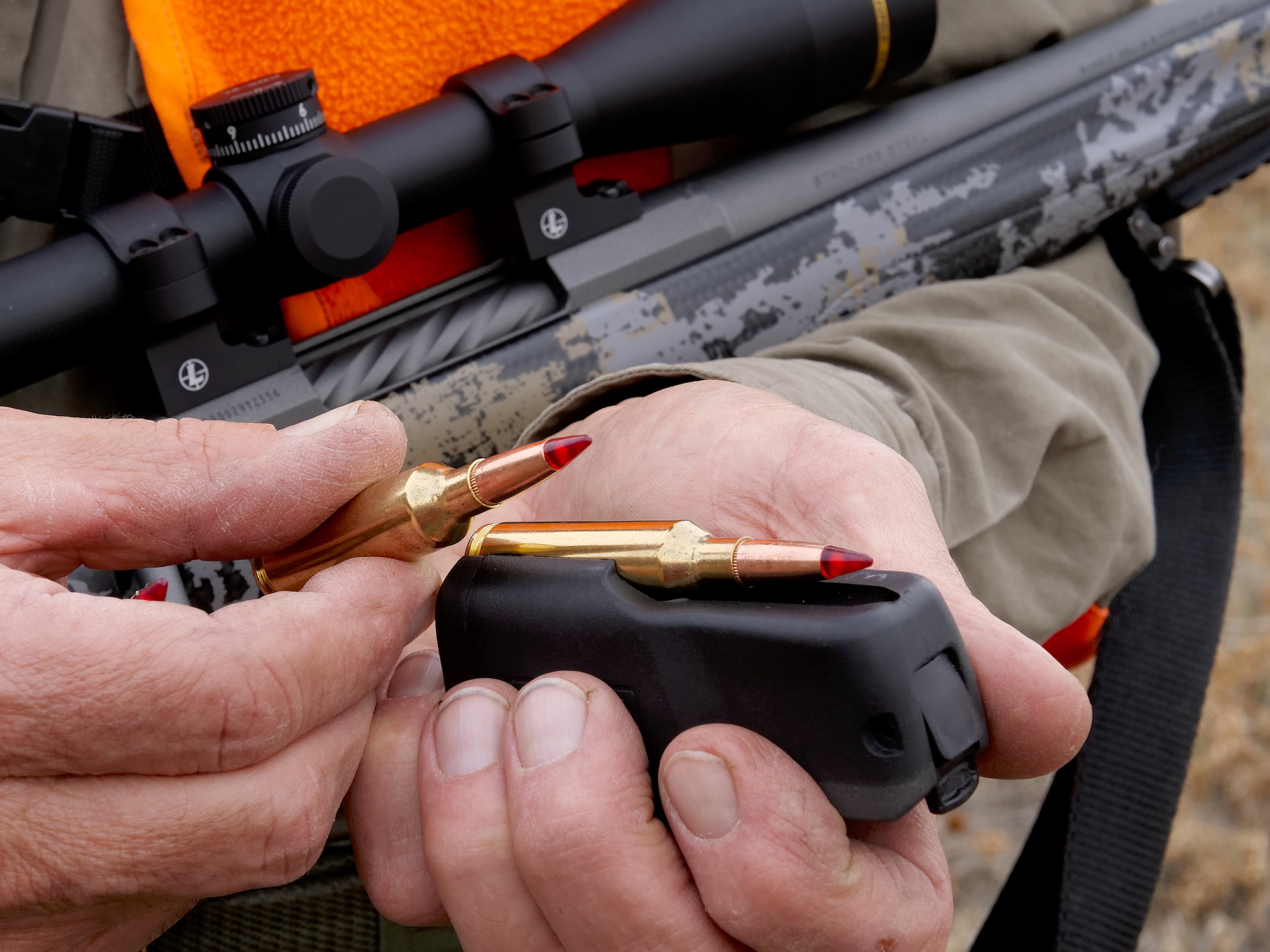
In order to provide enough room for extreme range dialing, scope main tubes must be oversized (30 to 34mm) and turrets will be fairly tall. You need a long screw (under the turret cap) to push the internal erector tube far enough for 1,000-yard adjustments and beyond. Expect to carry a heavier, bulkier scope for long range dialing.
Long range is different for different shooters. I believe that time of flight largely determines responsible shooting distances for game. When a bullet takes a half second or more to arrive at the target, it becomes too easy for that target to turn or step and convert a precise heart shot into a gut or lower leg hit. This suggests 500 yards as the end of the line. Hunters can and should take pride in being able to stalk well inside that distance. It’s all part of the game.
If you opt for turret dialing, be sure to get a high-quality scope. Adjustments must be not only precise, but repeatable. Poor quality scopes might not dial accurately and could lose accuracy with use. Mechanical parts wear out.
Test Your Method and Practice with It
Regardless of what sighting system you choose, test it on the range and in the field. Extensively. Be certain it puts bullets where it’s supposed to at each distance. Then practice shooting to varied distances. More on this topic in our next installment.
